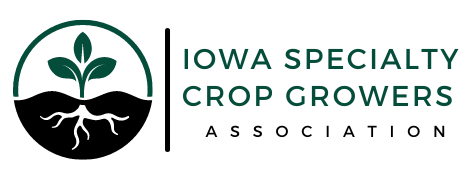Randall Vos
commercial fruit specialist
Iowa State University Extension and Outreach
rjvos@iastate.edu
As the temperatures drop and the first snow has arrived, a few questions are often asked about woody fruit crops.
Can I prune now?
Fall can be a convenient time to prune, but its best to wait until around the start of the new year to begin pruning. While the plants look completely dormant in late fall, they are likely still moving carbohydrates into the trunk and roots. There have also some reports that pruning early in the dormant season can cause plants to break bud slightly earlier than plants pruned in the spring.
Another good reason to delay pruning is there is still substantial risk for cold temperature damage. If we receive extensive damage to fruit buds later in the winter, there is no way to ‘glue back on’ the ones that were already pruned off to compensate for that loss.
How do I tell if my fruit buds were damaged?
Buds that bear the fruit the following growing season are the least hardy part of a fruit plant. In some fruit crops (cherries, grapevines, peaches) we can cut them open a few days following a cold temperature event to determine if they were damaged or not (Figure 1). The video Determining Winter Damage in Grapevines explains the steps of assessing bud damage. In some other fruit crops, it can be a bit more challenging to determine if damaged occurred.


Figure 1: Grapevine bud cut open to show if the large bud in the center is alive (left) or dead (right).
How cold can it get before fruit buds can get damaged in the winter?
Perennial fruit crop dormancy is generally broken into three phases: acclimation, deep (mid) winter dormancy, and de-acclimation. As days get shorter and the weather gets cooler in the fall, plants begin to acclimate to develop more cold hardiness (Figure 2). The degree of cold hardiness is relative to the cultivar and species being grown, the temperatures it has recently been exposed to, and the time of year. During deep winter dormancy buds will continue to stay dormant for a period, but the maximum cold hardiness of those buds it still a bit elastic and relative to the temperatures that they were exposed to. The hope is always that the temperatures at which buds are hardy to is lower than the actual temperatures that occur.

Figure 2: Generalized trend of fruit bud cold hardiness and temperature. The solid blue line represents the low temperatures, and the dashed green line represents the temperatures at which fruit buds will undergo damage. Note that once a determined amount of time in deep winter dormancy has occurred, plants will begin to de-acclimate and lose hardiness.
Figure 3 shows a similar concept to Figure 2, except that it is more realistic in that it shows variations in low temperatures and bud hardiness. In this case temperatures were gradually decreasing in the fall and so are the temperatures the buds were hardy to. But a rapid decrease in temperature occurred so quickly and before deep winter hardiness had set in, that the buds had not reached their maximum hardiness and likely would have damage from that event (shaded red). Additionally, with the warmup in the area shaded green, the buds likely lost a bit of their maximum hardiness, but that could be regained as temperatures slowly decreased.

Figure 3: Example of a trend of fruit bud cold hardiness. The solid blue line represents the low temperatures and the dashed green line represents the temperatures at which fruit buds will undergo damage. The shaded red area indicates a rapid decrease in temperature and the shaded green represents a rapid increase.
Given that cold hardness and plant dormancy is a dynamic process, it can be difficult to predict if fruit crops have been damaged by cold temperatures. If you suspect there could be cold temperature damage, I suggest checking your fruit buds prior to pruning. If substantial buds have been damaged, extra buds can be retained to compensate.
–Acreage Living Newsletter, Small Farm Sustainability – Iowa State University Extension & Outreach



